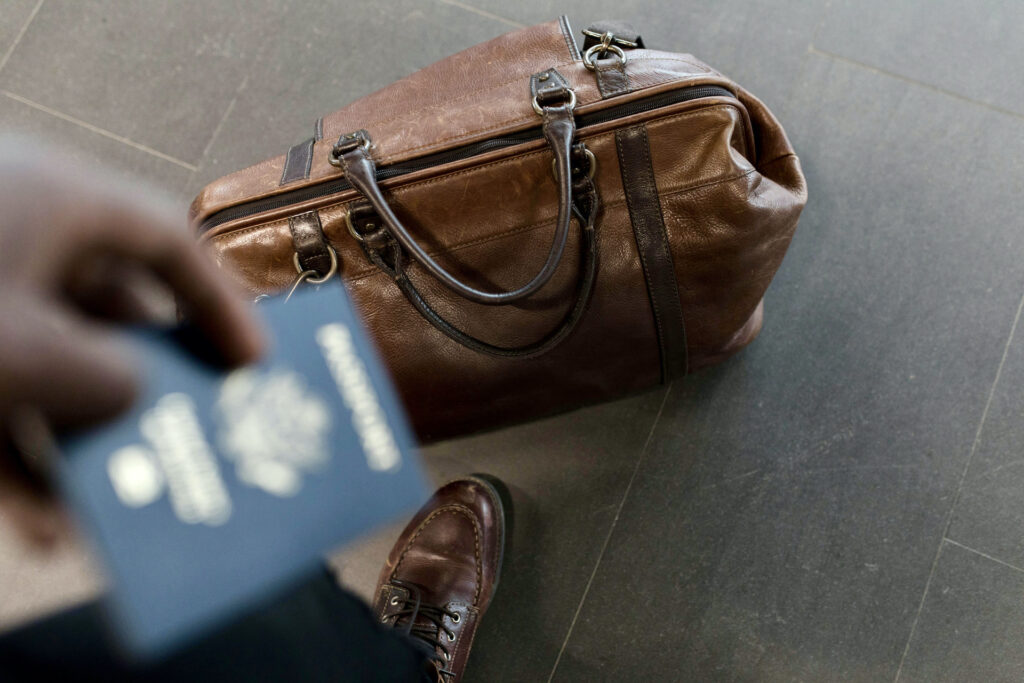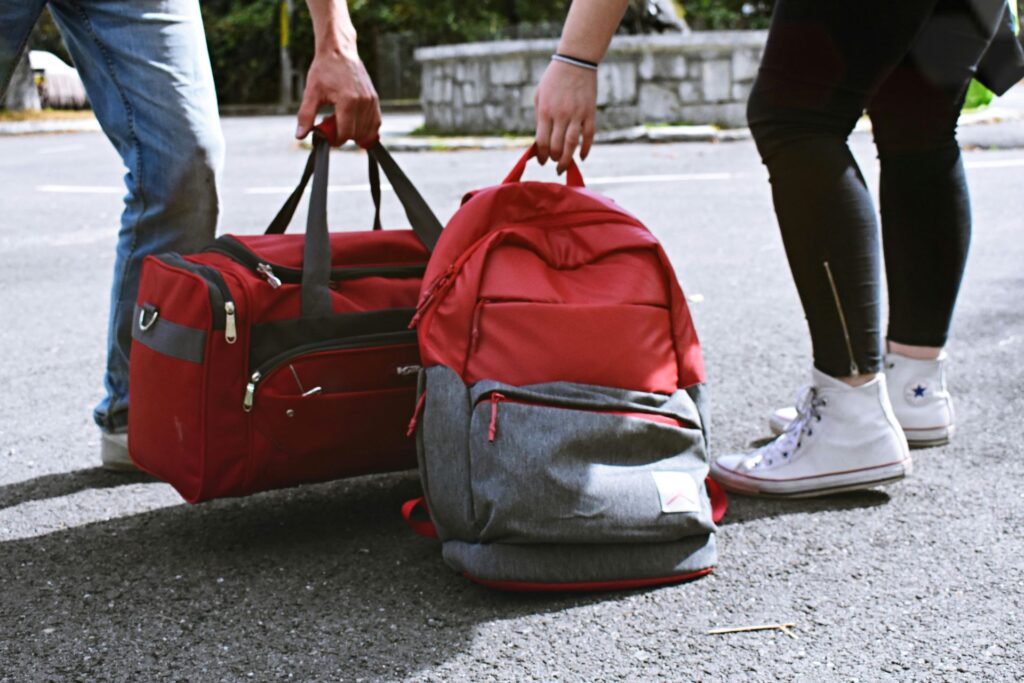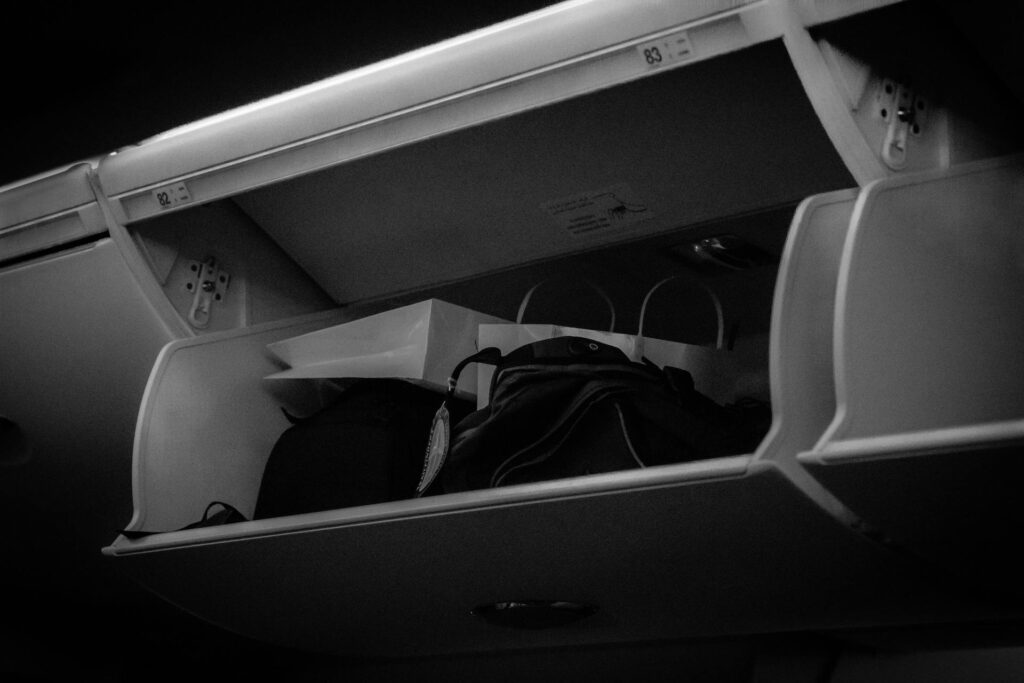Planning a plane trip and wondering what to pack in your carry-on luggage? Whether you’re flying for a vacation, a business trip or an international student exchange, a well-composed hand luggage is the key to a comfortable trip. Check out detailed information on what you can take on the plane, what limits apply, what to avoid and how to optimize your packing. Get ready for a stress-free flight!

Why is the topic of hand luggage important?
Hand luggage is your personal survival kit when traveling. It accompanies you in the aircraft cabin, so you have access to it throughout the flight. With well-planned packing, you will avoid problems at the airport and ensure your convenience. The key is to follow the carriers’ rules and safety regulations, which vary by airline and destination country.
What to pack on the plane to maximize space and meet requirements?
Hand luggage dimensions and limits
Before you start packing, check the dimensions of allowed hand luggage. Most airlines, such as Qatar Airways, Singapore Airlines, Emirates, specify a maximum size of 55 x 40 x 20 cm (including handles and wheels). Some low-cost airlines, such as Ryanair, offer a smaller free baggage (40 x 20 x 25 cm), and you have to pay extra for a larger one. The weight is usually between 8 and 10 kg, although there are exceptions.
Note: Always check the carrier’s policies before you fly. You can find the information on the airline’s website or in your booking confirmation. Don’t forget to measure your bag or backpack – every centimeter counts!

What can you pack in your carry-on luggage?
Documents and personal belongings
Your hand luggage should contain everything you need during the flight and immediately after landing. Start with your documents:
- Passport or ID card (check your destination country’s requirements).
- Airline ticket (in electronic or printed form).
- Boarding pass.
- Visa, if required.
- Travel insurance and hotel contact information.
Don’t forget a wallet with a debit card and cash in the currency of the destination country. It’s also a good idea to have a spare card in case you lose it.
Electronics and accessories
In your carry-on luggage, keep electronic devices such as:
- smartphone and charger,
- headphones,
- powerbank (up to 100 Wh, compliant with IATA regulations),
- laptop or tablet (pack them so that they can be easily removed during security screening).
Note: Powerbanks must be in carry-on baggage – they are prohibited in checked baggage.

Clothes and accessories
If you’re flying for a short trip, what to pack for the plane in terms of clothes? Focus on the essentials:
- a change of underwear and T-shirts in case of delays,
- a light jacket or sweater – it can be chilly on the plane,
- a scarf or shawl that can serve as a pillow,
- socks – for comfort on long flights.
Instead of thick clothes, choose thin layers that take up less space. The technique of rolling clothes instead of folding will allow you to fit more.
Cosmetics and hygiene
Cosmetics in hand luggage must meet strict requirements. Liquids, gels and aerosols must be in containers of up to 100 ml, placed in a transparent bag with a capacity of 1 liter. What is worth taking?
Miniature versions of shampoo, shower gel and toothpaste. Deodorant in a stick or small bottle. Moisturizing cream and lipstick – dry air on a plane dries out skin. Moisturized wipes and antibacterial gel.
Keep your bag of liquids in an easily accessible place – you’ll need to show it at security checks.
Medications and Health
If you take medications, pack them in your carry-on luggage. Take a supply of prescription medications (with a doctor’s certificate in case of a check-up), as well as basic painkillers or medicines for stomach problems. You may also want to bring along patches and bandages for minor injuries.
Important: In some countries, prescription drugs require documentation. Check the regulations before you travel.
Food and drinks
Wondering what food you can take on the plane? The following are allowed in carry-on luggage:
- dry snacks, e.g. energy bars, nuts, cookies,
- sandwiches or fruits (e.g. apples, bananas),
- empty water bottles – you can refill them after security check.

What should you not take in your carry-on luggage?
Security regulations are strict, so make sure you don’t pack prohibited items. The list includes:
- Sharp objects (e.g. scissors, pocket knives, metal files).
- Weapons and their imitations (even toys).
- Flammable, toxic or explosive substances.
- Liquids over 100 ml.
If in doubt, check the list of prohibited items on the IATA or carrier’s website. Prevention is better than explaining yourself during an inspection.
How to optimize packing of hand luggage?
Choose the right bag – backpack, travel bag or small suitcase? Choose luggage that fits within the limits and is comfortable. A backpack with multiple compartments makes organization easier, while a wheeled suitcase is practical for large airports.
Use organizers
Organizers and Ziploc bags will help you organize your belongings. Keep your electronics in one place, your toiletries in a separate bag, and your documents in an easily accessible pocket.
Minimize space
Instead of large bottles of cosmetics, choose samples or reusable containers. Fold clothes into cubes or roll them to save space. Make use of every space – for example, put socks inside shoes.
Plan ahead
Think about what you really need. A list of things to pack will help you avoid chaos. What to pack for the plane? Only the essentials!
Tips for different travel groups
- Tourists on short trips
Focus on versatile clothing and minimal gadgets. A lightweight backpack will work better than a suitcase.
- Business travelers
Take your laptop, documents and a smart shirt. A cable organizer will make it easier for you to work on the go.
- Families with children
Have snacks, toys, diapers and wipes in your carry-on luggage. For older children, prepare headphones and a tablet with stories.
- Exchange students
Take a supply of medication, a charger and academic documents. It’s also a good idea to have a notebook for quick notes.
Common problems and how to avoid them
Don’t exceed your limits. Luggage that is too heavy or too large can mean extra fees. Weigh your bag at home and measure its dimensions. Security screening may confiscate prohibited items. Check the list of prohibitions before packing. If you pack too much, your bag may not close. Plan ahead and leave a margin for souvenirs.
FAQ: Frequently Asked Questions
What should I pack in my carry-on luggage to fit everything?
Plan a list of essentials: documents, electronics, toiletries in small containers, light clothing and snacks. Use organizers and roll clothes to save space. Always check the carrier’s limits.
What to pack on the plane if I’m flying with a baby?
Take diapers, wipes, snacks, toys and a tablet with stories. Don’t forget a light blanket and spare clothing for the baby. Children’s liquids (e.g., milk) can exceed 100 ml, but require notification during inspection.
What are the limits for carry-on luggage?
Each carrier has different requirements! Standard dimensions are 55 x 40 x 20 cm, with a weight of 8 to 10 kg. Low-cost airlines may have smaller limits (such as 40 x 20 x 25 cm). Check the carrier’s rules before you fly.
What can’t be packed in hand luggage?
Sharp objects, liquids over 100 ml, flammable substances and weapons are prohibited. You can find a complete list on the carrier’s or IATA’s website.




